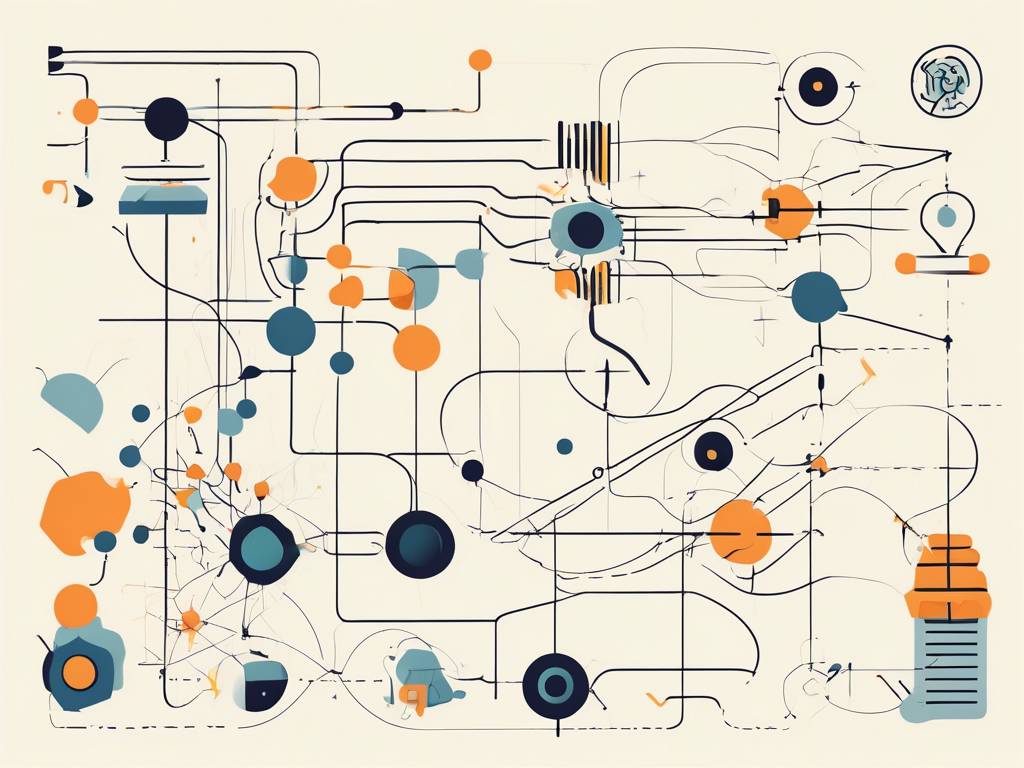In an era where artificial intelligence (AI) is redefining the possible, it’s crucial to understand the cogs that make the AI engine run: Machine Learning (ML) and Neural Networks (NN). The convergence of these technologies heralds transformative advancements across industries. This article delves into the fundamentals of AI development, beginning with the core concept that machine learning is the powerhouse behind AI.
Neural Networks, often visualized as the brain’s digital counterpart, emerge as the intricate building blocks enabling systems to learn from data. Their sophisticated architecture mimics the human brain, processing a multitude of signals to facilitate intelligent decisions. The synergy between machine learning and neural networks forms the backbone of AI, creating systems capable of astonishing feats.
Our journey decodes the entwined roles of ML and NN in shaping AI. We bridge the gap from ethereal theory to tangible application, spotlighting the real-world uses of these technologies that once seemed the stuff of science fiction but are now driving innovation forward at an unprecedented pace. Prepare to unlock the secrets of AI’s inner workings and explore their vast potential.
Exploring the Basics: How Machine Learning Powers AI

Understanding Machine Learning
Machine learning (ML) is a cornerstone technology in the development of artificial intelligence (AI). At its core, machine learning is a method of data analysis that automates analytical model building. Using algorithms that iteratively learn from data, machine learning enables computers to find hidden insights without being explicitly programmed where to look. This ability to automatically learn and improve from experience makes ML unique among AI technologies. The essence of machine learning lies in its ability to make decisions with minimal human intervention, by analyzing vast amounts of data and recognizing patterns that are not immediately obvious or are too complex for humans to discern efficiently.
—
The Role of Neural Networks
Neural networks, a subset of machine learning, mimic the workings of the human brain to process information. They are composed of layers of interconnected nodes, resembling the brain’s neurons, which can learn and make intelligent decisions over time. Neural networks are instrumental in advancing AI, especially in complex tasks such as image and speech recognition, natural language processing, and autonomous driving. These networks use a technique called deep learning, which involves training the system with a huge amount of data. The «deep» in deep learning refers to the number of layers through which the data is transformed. More layers allow the network to recognize a broader range of features at different levels of abstraction, leading to more accurate results in tasks like pattern recognition and semantic analysis. By leveraging the computational power of neural networks, AI developers can create systems that not only mimic human thought processes but also continuously learn and improve, making them increasingly sophisticated over time.
Neural Networks Unveiled: The Building Blocks of Intelligent Systems
The Architecture of Neural Networks
At the heart of every neural network lies its architecture, a complex arrangement that mirrors the human brain’s structure to an extent. This architecture is composed of units called neurons, organized in layers that process information through their interconnections. There are three primary types of layers: the input layer, which receives the initial data; hidden layers, which perform the bulk of processing through a system of weighted connections; and the output layer, which delivers the final result or prediction. The power of a neural network largely depends on the depth and breadth of its hidden layers, allowing it to learn and model complex patterns and relationships in the data it’s fed. By adjusting the weights of these connections, a process known as training, neural networks can learn from examples, improving their accuracy over time in tasks such as classification, regression, and clustering.
—
Training Neural Networks: The Path to Intelligence
Training is the cornerstone of making neural networks effectively mimic cognitive processes. This involves feeding large datasets into the network and adjusting the weights of the connections between neurons based on the accuracy of the network’s output. The most common method of training is backpropagation, where the network learns from its mistakes through a feedback loop, gradually reducing errors in its predictions. The complexity of this training process is directly proportional to the complexity of the tasks the network is designed to perform. For instance, deep learning networks, which contain many layers of neurons, require substantial computational power and vast amounts of data to train effectively. However, once trained, these networks can perform highly sophisticated tasks, from recognizing objects in images with incredible accuracy to understanding human speech. The effectiveness of a neural network, thus, relies not only on its architecture but significantly on the quality of its training, underscoring the importance of data quality and computational resources in the development of intelligent systems.
Machine Learning and Neural Networks: Fundamentals of AI Development

The Synergy Between Machine Learning and Neural Networks
At the intersection of machine learning (ML) and neural networks lies a potent synergy that significantly propels the field of artificial intelligence (AI) forward. This connection is not merely superficial; neural networks provide the architecture and computational framework that allows machine learning to achieve its full potential in complex problem-solving scenarios. Through the lens of AI development, this synergy is fundamental, as it combines the adaptive learning capabilities of ML with the intricate processing power of neural networks.
On one hand, machine learning algorithms are designed to improve automatically through experience. This is achieved by leveraging data-driven models that adapt and learn from patterns within massive datasets. On the other hand, neural networks, with their multi-layered structure inspired by the human brain, excel in identifying and interpreting these patterns. When combined, ML algorithms can guide neural networks in refining their connections and improving their decision-making processes, thereby enhancing their ability to perform tasks such as image recognition, language translation, and more.
This collaborative dynamic is not static but evolves with each advancement in both fields. As machine learning techniques become more sophisticated, they enable neural networks to handle increasingly complex tasks with greater accuracy. Conversely, improvements in neural network designs and training methods can significantly boost the efficiency and effectiveness of machine learning algorithms. This reciprocal relationship underscores the importance of ongoing research and development in both domains to push the boundaries of what AI systems can achieve.
—
Enhancing AI Capabilities Through Combined Efforts
The convergence of machine learning and neural networks not only accelerates the pace of AI innovation but also broadens the scope of applications. This synergy has led to the development of more sophisticated AI systems capable of understanding and interacting with the world in ways that were previously thought to be exclusive to human intelligence. For instance, in the realm of natural language processing (NLP), this collaboration has produced AI models that can comprehend and generate human language with remarkable nuance and complexity.
Furthermore, the integration of ML and neural networks has been instrumental in advancing deep learning, a subset of machine learning characterized by networks with many layers. Deep learning models have shown extraordinary success in areas such as autonomous driving and medical diagnosis, where they can process and analyze vast amounts of information far beyond the capacity of human experts.
One of the key factors contributing to these advancements is the ability of neural networks to automatically and continuously improve their performance by adjusting their internal parameters. This ability, powered by machine learning algorithms, enables AI systems to learn from new data, adapt to changing environments, and make informed decisions with minimal human oversight. As technology continues to evolve, the synergy between machine learning and neural networks will undoubtedly play a critical role in shaping future AI developments, making it possible to tackle increasingly complex challenges across various domains.
Decoding AI: The Role of Machine Learning and Neural Networks
Understanding the Mechanics Behind Machine Learning
At the heart of AI’s capabilities lies the intricate process of machine learning (ML), a technology that empowers machines to learn from experience. Machine learning algorithms use statistical methods to enable computers to ‘learn’ from data, thereby improving their performance on specific tasks without being explicitly programmed for each task. This learning process is fundamentally driven by the recognition of patterns and the adjustment of program actions accordingly. ML methodologies are varied, including supervised learning, where the system is trained on a pre-defined set of training examples, and unsupervised learning, which does not use output data and instead learns to identify patterns directly from the input data. By harnessing these methodologies, machine learning plays a pivotal role in enhancing the intelligence of AI systems, making it an indispensable element in the development of sophisticated AI applications.
—
The Crucial Role of Neural Networks in Advancing AI
Neural networks represent a significant advancement in the field of machine learning, introducing a level of complexity and capability that mirrors the function of the human brain. These networks are composed of layers of nodes or «neurons,» each designed to perform specific, individual computations. Data passes through these interconnected neurons, with each layer transforming the input in a way that the next layer can use more effectively, culminating in a final output that provides the answer to a problem. The strength of neural networks, especially those utilizing deep learning, lies in their ability to learn hierarchical representations. As data traverses through the layers, neural networks can automatically discover the relevant features for solving the task at hand, without human intervention. This automated feature extraction is what sets deep learning apart in tasks such as image and speech recognition, where traditional algorithms struggle. Neural networks, through their structure and function, thus play a critical role in pushing the boundaries of what AI can achieve, enabling machines to solve complex problems with an efficiency and accuracy that rival, and sometimes surpass, human capabilities.
From Theory to Application: Real-World Uses of Machine Learning and Neural Networks

Transforming Industries with Machine Learning
Machine learning has moved from theoretical discussions to practical applications, significantly impacting various industries by driving efficiency, innovation, and revolutionizing traditional practices. One of the standout applications of machine learning is in the healthcare sector, where it’s being used to personalize patient care through predictive analytics and improve diagnoses with image recognition technologies. Another significant application is in the financial industry, where ML algorithms are employed to detect fraudulent activities, automate trading strategies, and offer personalized customer services. Additionally, the retail sector has seen a transformative change with machine learning, utilizing customer data to tailor shopping experiences, manage inventory, and optimize logistics. These examples underscore the versatility and potential of machine learning in enhancing operational efficiencies and creating new opportunities across different fields.
Neural Networks at the Forefront of Technology Innovation
Neural networks, specifically deep learning models, have been instrumental in advancing technological capabilities, notably in areas such as autonomous vehicles, voice recognition systems, and sophisticated recommendation engines. In the realm of autonomous vehicles, neural networks process and interpret complex inputs from the vehicle’s sensors, enabling real-time decision-making in navigation and hazard avoidance. Voice recognition systems, powered by neural networks, have become increasingly accurate, understanding and processing human speech with high precision, thus making virtual assistants more helpful and interactive. Furthermore, recommendation engines, such as those used by streaming services and e-commerce platforms, leverage neural network algorithms to analyze user behavior and preferences, significantly improving the relevance and personalization of recommendations. These cutting-edge applications highlight the transformative power of neural networks in pushing the boundaries of what is possible with artificial intelligence, leading to advancements that were once thought to be within the realm of science fiction.
Summing up
As we wrap up our exploration into Machine Learning and Neural Networks, it’s clear that these pillars of AI are not just reshaping technology, but they are also redefining what it means to be innovative in the modern world. We’ve seen how the symbiotic relationship between ML and NN forms a critical nexus in the AI ecosystem, driving everything from voice recognition software to life-saving medical diagnostics.
Through vivid examples, we have witnessed the tangible applications where ML and NN harmoniously converge to solve complex problems and enhance human capabilities. The implications of such advancements extend far beyond the confines of tech—they promise to elevate the quality of life, bolster efficiency, and even challenge our understanding of human intelligence.
As we stand on the brink of a new technological renaissance, it is incumbent upon us to steer the future wisely. Let’s embrace the transformative power of Machine Learning and Neural Networks with foresight and responsibility, ensuring that the AI we develop not only outperforms our expectations but also aligns with the greater good. Delving deep into the fundamentals of AI development isn’t just intellectual curiosity—it’s preparing ourselves for a future fashioned by the very technologies we demystify today.
